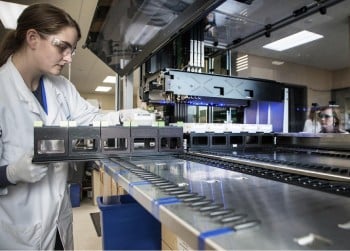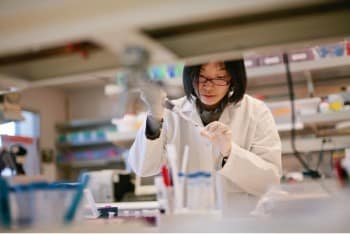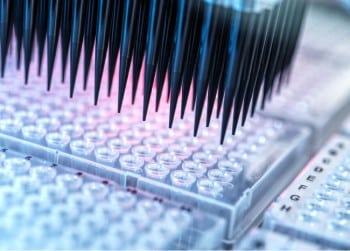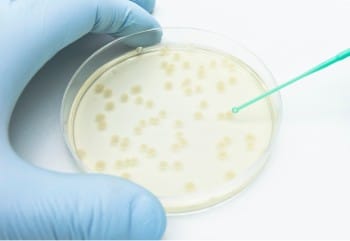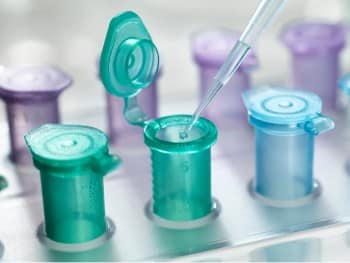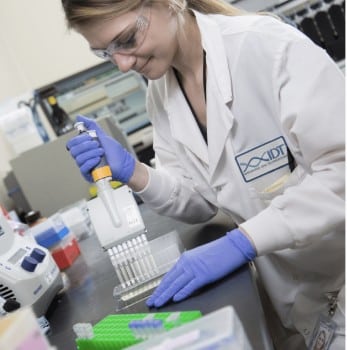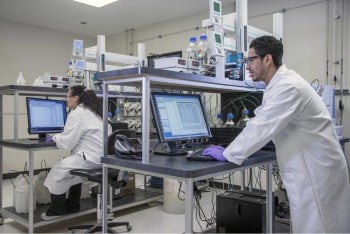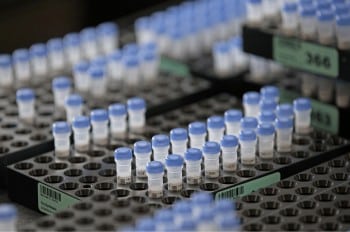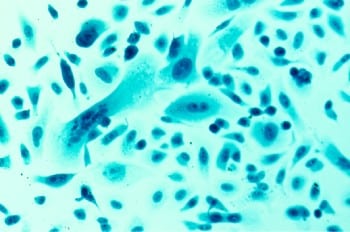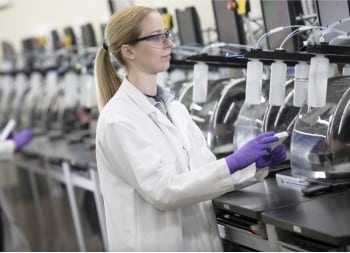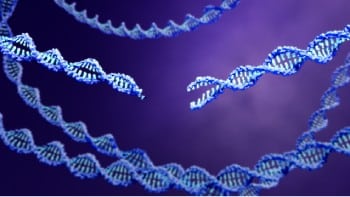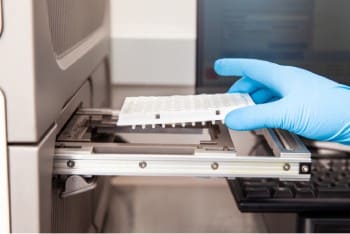
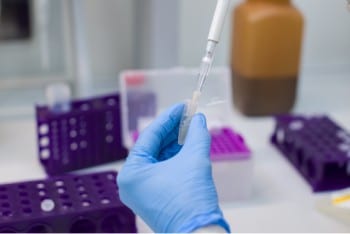
Choose your region, country/territory, and preferred language
Click Chemistry
Click chemistry is a two-step process that uses quantitative chemical reactions of alkyne and azide moieties to create covalent carbon-heteroatom bonds between biochemical species.1 The reaction uses copper(I) as a catalyst and forms a 1,2,3-triazole between an azide and terminal alkyne.2 The technology is reliable and stable which makes it an ideal oligonucleotide labeling method.
The benefits of click chemistry include1:
- Reaction occurs in aqueous solution and at room temperature
- Stability toward H2O, O2, and most organic synthesis conditions.
- No side reactions
- Robust catalytic process
- Lack of functional group interference
- A thermally and hydrolytically stable triazole connection
- Unprecedented level of selectivity, reliability, and scope for syntheses which require covalent linkage between biochemical species.
| Modification Name | Used for modifying oligos with |
|---|---|
| 5', Int, 3' Azide (NHS Ester) | 5’, 3’, or internal azide functional group |
| 5' Hexynyl | 5’ alkyne functional group |
| 5', Int, 3' 5-Octadiynyl dU | 5’, 3’, or internal alkyne functional group |
| 5', Int Biotin (Azide) | 5’ or internal biotin functional group |
| 5', Int 6-FAM (Azide) | 5’ or internal 6-FAM functional group |
| 5', Int 5-TAMRA (Azide) | 5’ or internal 5-TAMRA functional group |
| 5', 3' DBCO (NHS Ester) | 5’ or 3' strained cyclooctyne functional group for Copper-Free Click Chemistry |
| 5' DBCO-TEG | 5’ strained cyclooctyne functional group for Copper-Free Click Chemistry |
To order an alkyne or azide modified oligo:
Specify the nucleic-acid sequence along with the appropriate alkyne or azide modifications included in the sequence.
To order an oligo modified by a 1,2,3-triazole linkage of Biotin, 6-FAM, or 5-TAMRA :
Select the desired azide modification at the desired location within the nucleic-acid sequence. IDT will synthesize the oligo, perform the click chemistry reaction, and purify the product.
References
- Rostovtsev, V.V., et al., A stepwise huisgen cycloaddition process: copper(I)-catalyzed regioselective "ligation" of azides and terminal alkynes. Angew Chem Int Ed Engl, 2002. 41(14): p. 2596-9.
- Moses, J.E. and A.D. Moorhouse, The growing applications of click chemistry. Chem Soc Rev, 2007. 36(8): p. 1249-62.
Click-Chemistry enabled, modified oligos are manufactured and sold under license from Baseclick GmbH, using Base-click's proprietary Click Chemistry. All such modified products are sold by IDT for the end-user's internal research purposes only. See www.baseclick.org for further details.

